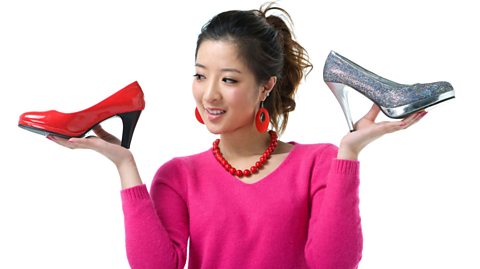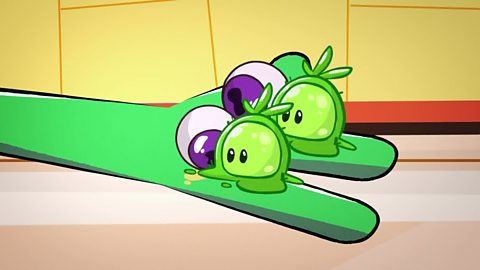Black Friday could see many of us scouring the web for a pre-Christmas money-saver. The annual event means discounts, offers and bargains tempting us to crack open our wallets.
But what happens in our brains when we see these deals? How do those chemicals in our head react to a potential bargain and (perhaps) stop us making an ill-advised buy? HereÔÇÖs what the experts have to say.

Your brainÔÇÖs bargain basement
OK, so itÔÇÖs not actually in the basement of your brain, but if youÔÇÖve ever experienced a rush of excitement when finding that perfect item during an internet browse, thank your nucleus ambens. This is the part of your brain that controls pleasure and the act of seeking out that gadget, book, pair of jeans or holiday that you really, really want is similar to the excitable tension our ancestors felt when on the tail of prey they were hunting for dinner.
But youÔÇÖve heard of the saying ÔÇÿthe thrill is in the chaseÔÇÖ? Once youÔÇÖve cornered that must-have item, your brain then has a heated debate with itself on whether or not to proceed with the purchase.
Should you or shouldnÔÇÖt you?
Say the thing you want is within your price range, perhaps itÔÇÖs even been discounted in the sales. That sparks up part of your brain called the insula. This is also the area that controls pain. Even if you can afford it, your brain will tell you to exercise caution and not take it to the till, because paying for something is a lot more painful than spotting it in the first place.

However, the rational part of your brain, the medial prefrontal cortex, still has something to say about this. It takes the pleasure youÔÇÖve had in finding this must-have, adds in the insulaÔÇÖs pain at paying for it and balances out the two arguments.
Have you ever stopped with a new pair of shoes, just before you add it to your online basket, wondering if you can really justify spending that much money on yourself? ThatÔÇÖs the process your brain is undergoing. The more affordable the item is, the more positively your brain will react, and the more likely you are to buy it.
That's not to say you'll never make an ill-advised impulse buy. Consumer psychologist Dr Dimitri Tsivrikos told the ┤¾¤¾┤½├¢ in 2013: "Brain studies have shown that when we are excited by a bargain, this interferes with your ability to clearly judge whether it is actually a good offer or not."
So now you know why those shocking pink thigh-high pleather boots have been untouched at the top of the wardrobe for the past three years.
Inside Number 9
ThereÔÇÖs a reason so many prices have a nine at the end. Three pounds ninety-nine; 99p - itÔÇÖs called charm pricing.
The psychology behind it is known as the ÔÇÿleft digit effectÔÇÖ. If something that costs a fiver is knocked down a penny it becomes ┬ú4.99, so our brains see it as costing four pounds rather than practically five.

Because we are so familiar with prices ending in nine, we also trust them more. In 2003, the University of Chicago ran an experiment where three items were on sale, priced at $34, $39 and $44. The item selling at $39 sold the most, despite there being a cheaper option.
As Robert Schindler, a professor at AmericaÔÇÖs Rutgers Business School, said as part of a 2011 study into '99' pricing: ÔÇ£When a price changes from $30 to $29.99, the change from three to two makes more of a difference than the value of that money could predict.
ÔÇ£It is like when a 39-year-old turns 40, the birthday feels like a big deal. Or when 1999 ends and 2000 starts. It feels like an emotional difference.ÔÇØ

Customers are kindly requested to BOGOF
During the weekly shop, weÔÇÖll often see BOGOF offers (buy one, get one free) or BOGOHP (buy one, get one half price).
Although customers are getting something at a reduced price, studies show that when we consider a BOGOF, our brains focus on what weÔÇÖre getting for free, rather than what weÔÇÖre paying for in the first place. For example, you may never have thought of switching from your usual brand of toothpaste but if you see a different one in a BOGOF offer, youÔÇÖre likely to be tempted as the emphasis is on having a whole tube of the stuff for absolutely nothing.
Marketing consultant Pius Boachie said in a 2016 blog post on psychological pricing strategies: ÔÇ£The psychological strategy at work here is, simply, greed. Once a customer comes across the offer, logic gets tossed to the wind and the main focus is making a purchase to get the free item.ÔÇØ

Bargain hunt like a boss
Although there are bargains to be had out there, the experts also have some good advice to ensure that medial prefrontal cortex of yours makes the right decision every time.

When it is possible to shop in person, stores with loud music are known to be distracting and prevent you making a measured decision on whether a bargain is worth it or not. While we are encouraged to shop alone during lockdown, it can also save you some money - peer group pressure can make you succumb to buying something you never really wanted in the first place.
And before you embark on that quest for a good deal, have a snack first - shopping on a full stomach makes you less daft with your cash.
This article was last updated in November 2020
Why does the date of Easter move around?
There's a reason why it's a moveable feast - find out why here.

Snoot is shopping for blobs and eyeballs. He uses multiplication to find their total cost.

Manage your money while you study. video
The top tips to balance the books while you study.
